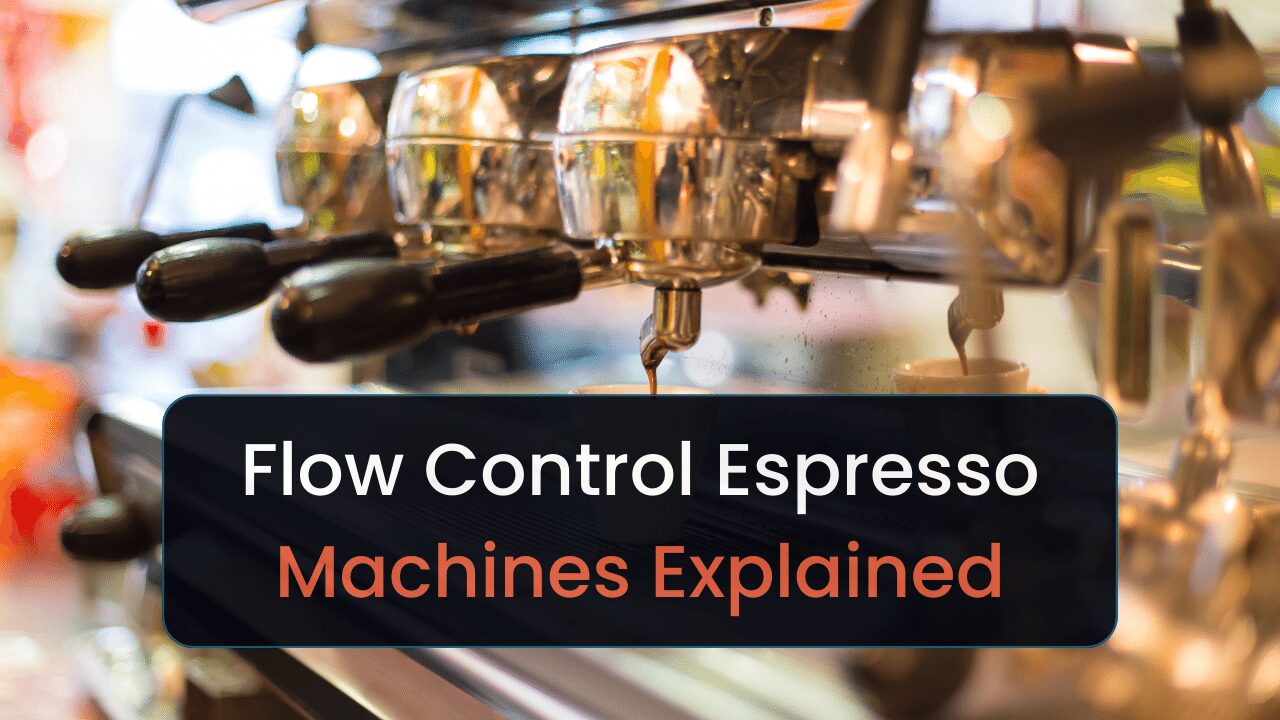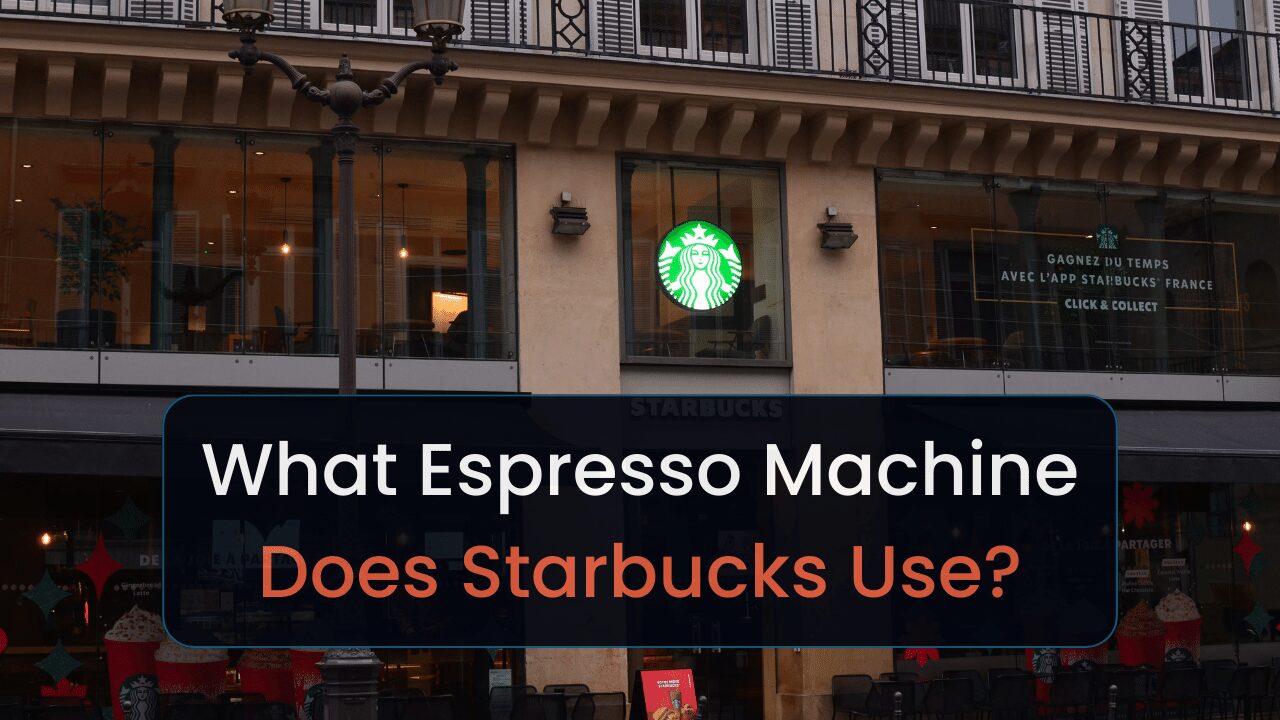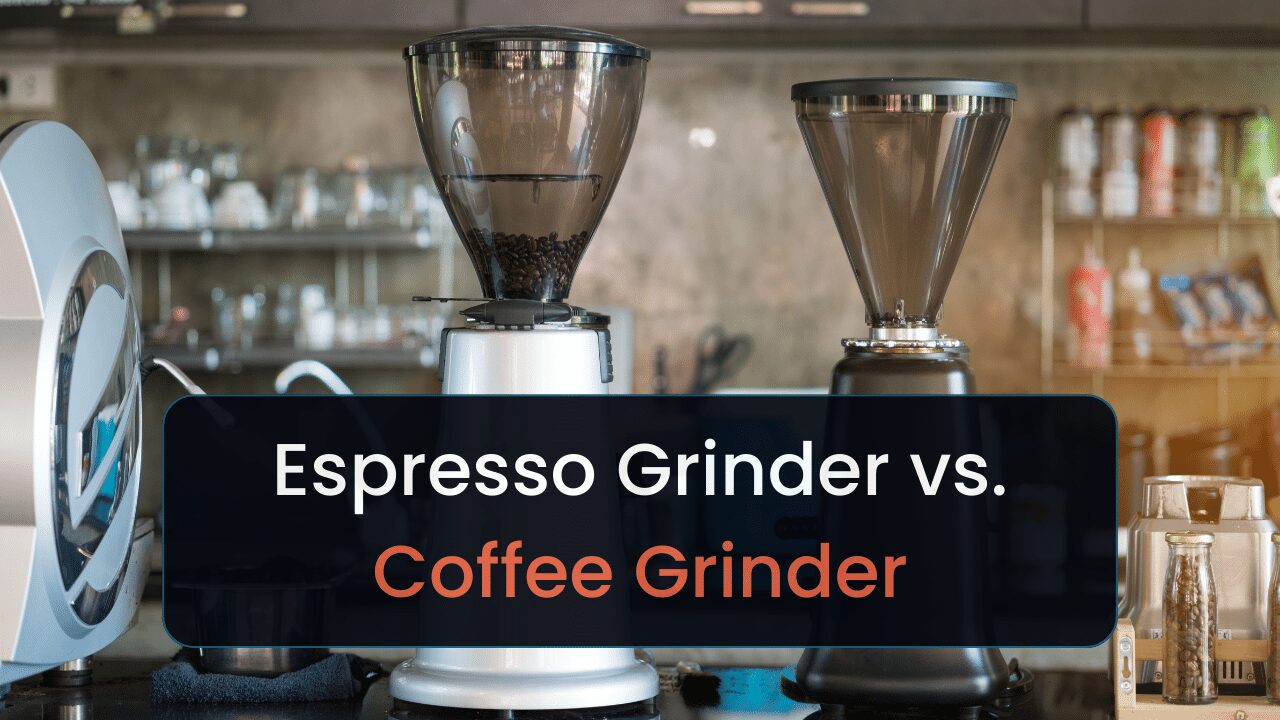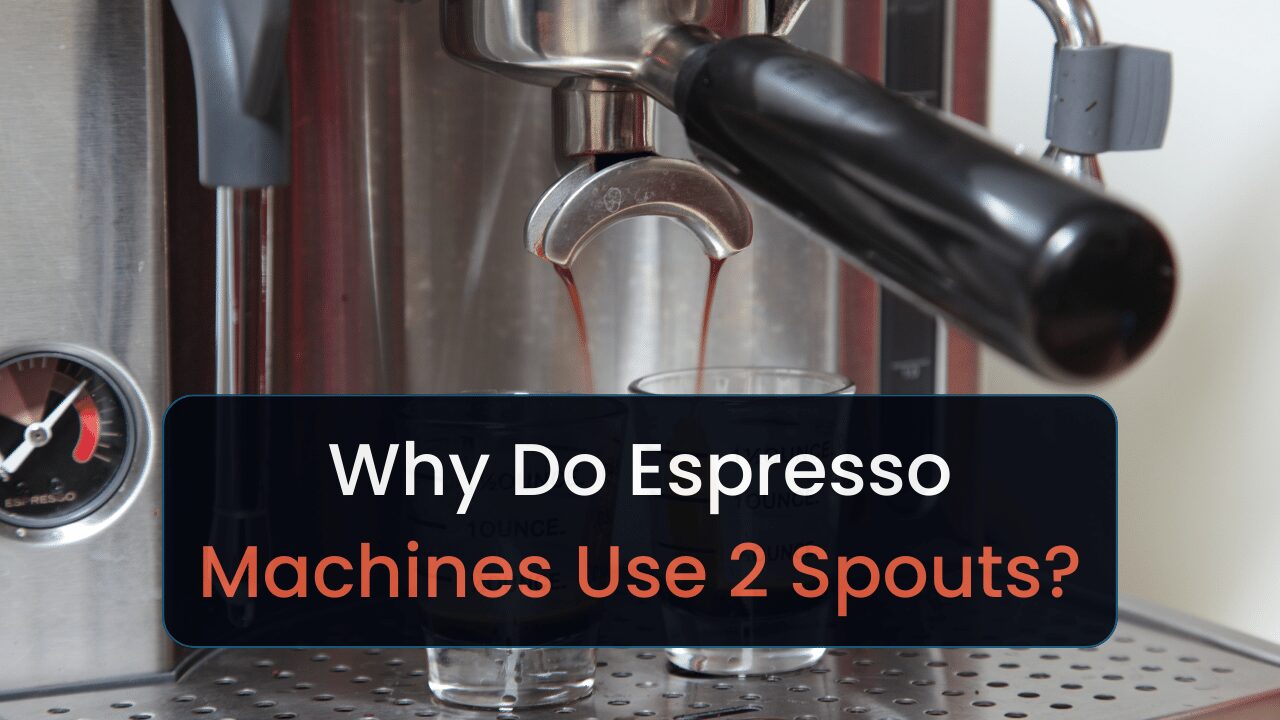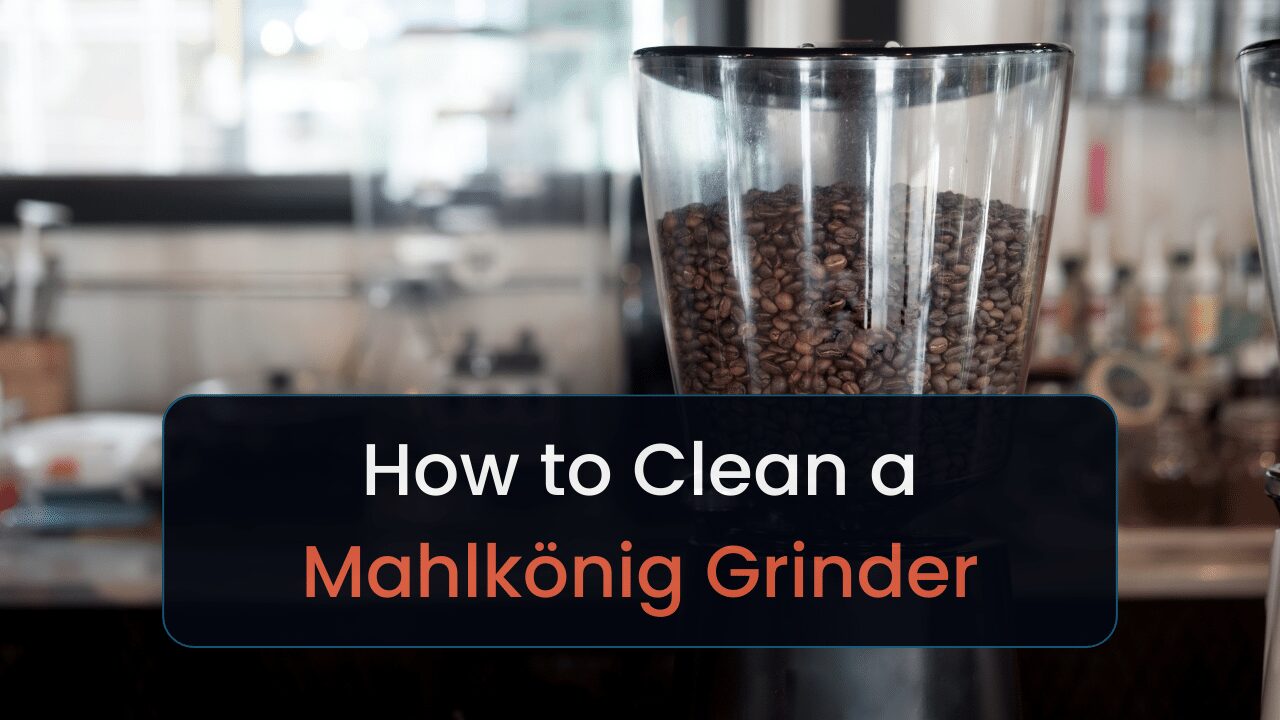I’ve been searching for a brewing method I’d want to use daily. That led me to write this enormous guide on various coffee-making methods.
To find the best way to make coffee, we’ll explore the following:
Let’s brew.
Key Takeaways
- Some of what I’ll cover takes seconds (espresso), while others take hours (cold brew)
- Most methods require coarse coffee grinds
- Some methods require additional accessories (e.g., filter)
- Instant coffee is the most affordable “brewing” method
20 Best Coffee Making Methods Ranked
Here are all the different coffee making methods compared:
| Brewing Method | Caffeine Content * | Price Per Cup † | Acidity ‡ | Best For |
| Drip coffee | 70–140 mg | $0.15–$0.25 | Medium-high | Convenience & consistency |
| Pour-over | 69–92 mg | $0.30–$0.50 | Low-medium | Control |
| French press | 80–120 mg | $0.20–$0.40 | High | Beginners |
| AeroPress | 63–84 mg | $0.20–$0.40 | Medium-high | Portability |
| Espresso maker (per shot) | 25–126 mg | $0.50–$1.00 | Low-medium | Intensity & crema |
| Stovetop | 219–292 mg | $0.10–$0.20 | Medium-high | Simplicity |
| Cold brew | 100–200 mg | $0.40–$0.60 | Low | Smoothness & low acidity |
| Japanese iced coffee | 69–92 mg | $0.30–$0.50 | Low-medium | Freshness |
| Percolator | 64–272 mg | $0.10–$0.20 | High | Nostalgia |
| Siphon/vacuum | 95 mg | $0.40–$0.60 | Medium-high | Decorative |
| Turkish | 50–80 mg | $0.10–$0.20 | High | Tradition |
| Qahwa | 4 mg | $0.10–$0.20 | High | Spice |
| Coffee bag | 85–95 mg | $0.30–$0.50 | Medium-high | Ease & convenience |
| Clever dripper | 69–92 mg | $0.20–$0.40 | Low-medium | Balance & simplicity |
| Phin | 100 mg | $0.10–$0.20 | Medium-high | Camping |
| Walküre | 95 mg | $0.40–$0.60 | Medium-high | Innovation & design |
| Nel drip | 69–92 mg | $0.30–$0.50 | Low-medium | Low-cost |
| Pod machine | 50–200 mg | $0.50–$1.00 | Medium-high | Speed |
| Instant coffee | 30–90 mg | $0.05–$0.10 | High | Availability & cost |
* These numbers are estimates. Caffeine content will vary on bean roast and species (e.g., Robusta vs. Arabica) used. Take these with a grain of salt.
† These prices are only estimates based on the cost of coffee beans, filters, water and electricity, and they may vary depending on your location, preferences and equipment.
‡ Acidity levels are only estimates based on the pH scale and the brewing methods, and they may vary depending on your location, preferences and equipment.
Takeaways from the table
- Instant coffee costs the least per cup and doesn’t require a coffee maker or accessories.
- Cold-brewed coffee is the least acidic, and has the smoothest taste.
- Stovetop coffee has the highest caffeine content (on average).
- Get decaffeinated instant coffee packets to get the least amount of caffeine without searching the internet for a Qahwa. Or make long espresso shots with decaffeinated beans.
- Don’t take the caffeine content too seriously, though. As shown in my asterisk footnote, many factors will impact caffeine content.
- As for best uses, that depends on you. If you’re camping, get a phin or AeroPress. Get a pod coffee maker if you want a quick cup of coffee before work.
- You might find yourself here because you’re wondering, “what the healthiest coffee brewing method is.” There is none. However, making your own coffee, instead of buying instant coffee, could prove more healthy. As manufacturers may add additives and preservatives to instant coffee. Or they may have more sugar.
Coffee Making Methods Compared & Explained
Let’s compare different coffee brewing methods, the coffee makers used, and additional accessories:
| Brewing Method | Required Accessories | Best Coffee Bean Grind |
| Drip coffee | Drip coffee maker, paper filter | Medium |
| Pour-over | Pour-over brewer, paper filter, kettle, scale | Medium-fine |
| French press | French press | Coarse |
| AeroPress | AeroPress, paper filter, kettle | Fine |
| Espresso maker | Espresso machine, portafilter, tamper | Fine |
| Stovetop | Stovetop brewer | Fine |
| Cold brew | Cold brewer | Coarse |
| Iced coffee | Coffee maker | Medium |
| Japanese iced coffee | Coffee maker | Medium-fine |
| Percolator | Percolator | Coarse |
| Siphon/vacuum | Siphon brewer | Medium |
| Turkish | Turkish pot | Extra-fine |
| Qahwa | Qahwa pot | Medium |
| Coffee bag | Coffee bag | Coarse |
| Clever dripper | Clever dripper, paper filter, kettle, scale | Medium |
| Phin | Phin brewer, filter | Medium-coarse |
| Walküre | Walküre brewer | Medium-fine |
| Nel drip | Nel drip brewer | Medium-fine |
| Pod machine | Pod machine | N/A |
| Instant coffee | Cup | N/A |
Drip Coffee Brewing Methods
Drip brewing coffee-making methods involve hot water pouring or dripping over coffee grounds. Extracting flavors as it passes through a filter, and then collecting in a container or cup below.
Check out different drip coffee methods below.
1. Automatic Drip Coffee Makers
An automatic drip coffee maker is an electric appliance that brews coffee by heating water and passing it through ground coffee in a filter.
It’s one of the most popular brewing methods in the United States.
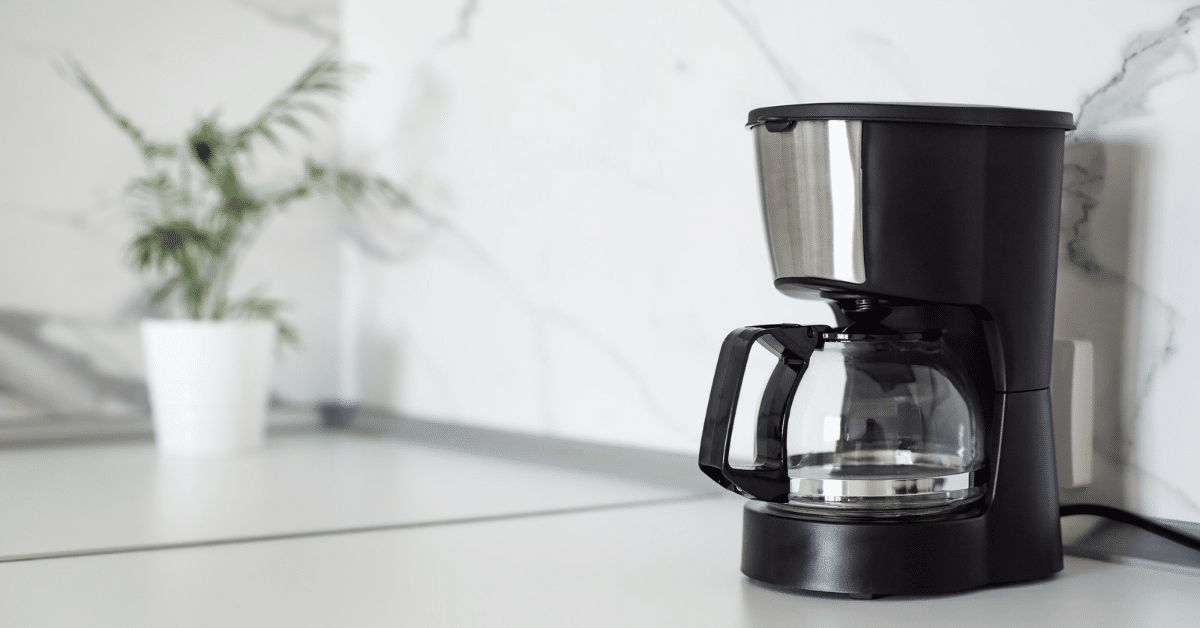
A cup of drip coffee has 70–140 mg of caffeine (on average). And it’ll usually cost $0.15–$0.25 per cup.
How It Works
Automatic drip machines heat water to 195–205 °F (90–96 °C), before dispersing it over the coffee grounds in a filter. As the hot water flows through the grounds, it extracts the flavors and oils, creating coffee that drips into a carafe or serving container below.
The brewing process takes a few minutes. Many machines have a warming plate to keep the coffee hot once brewed.
Advantages & Disadvantages
Pros:
- Easy to use & maintain
- Consistent brewing results
- Suitable for brewing larger quantities
- Programmable features on some models
Cons:
- Limited control over brewing variables
- Not ideal for small quantities of coffee
- Less control over water temperature
- Coffee can become bitter if left on the warming plate too long
Popular Brands & Models
Let’s compare some of the best modems and brands:
| Brand | Model | Key Features | Price Range |
| Cuisinart | DCC-3200P1 | 14-cup capacity, programmable, self-cleaning | $$$ |
| Bonavita | BV1900TS | 8-cup capacity, pre-infusion, optimal temp | $$$$ |
| Hamilton Beach | FlexBrew 49976 | Single-serve or 12-cup, K-Cup compatible | $$$ |
| Mr. Coffee | BVMC-SJX33GT | 12-cup capacity, programmable, auto-pause | $$ |
2. Pour-Over Coffee
A pour-over coffee maker is a manual brewing method that involves pouring hot water over coffee grounds in a conical filter.
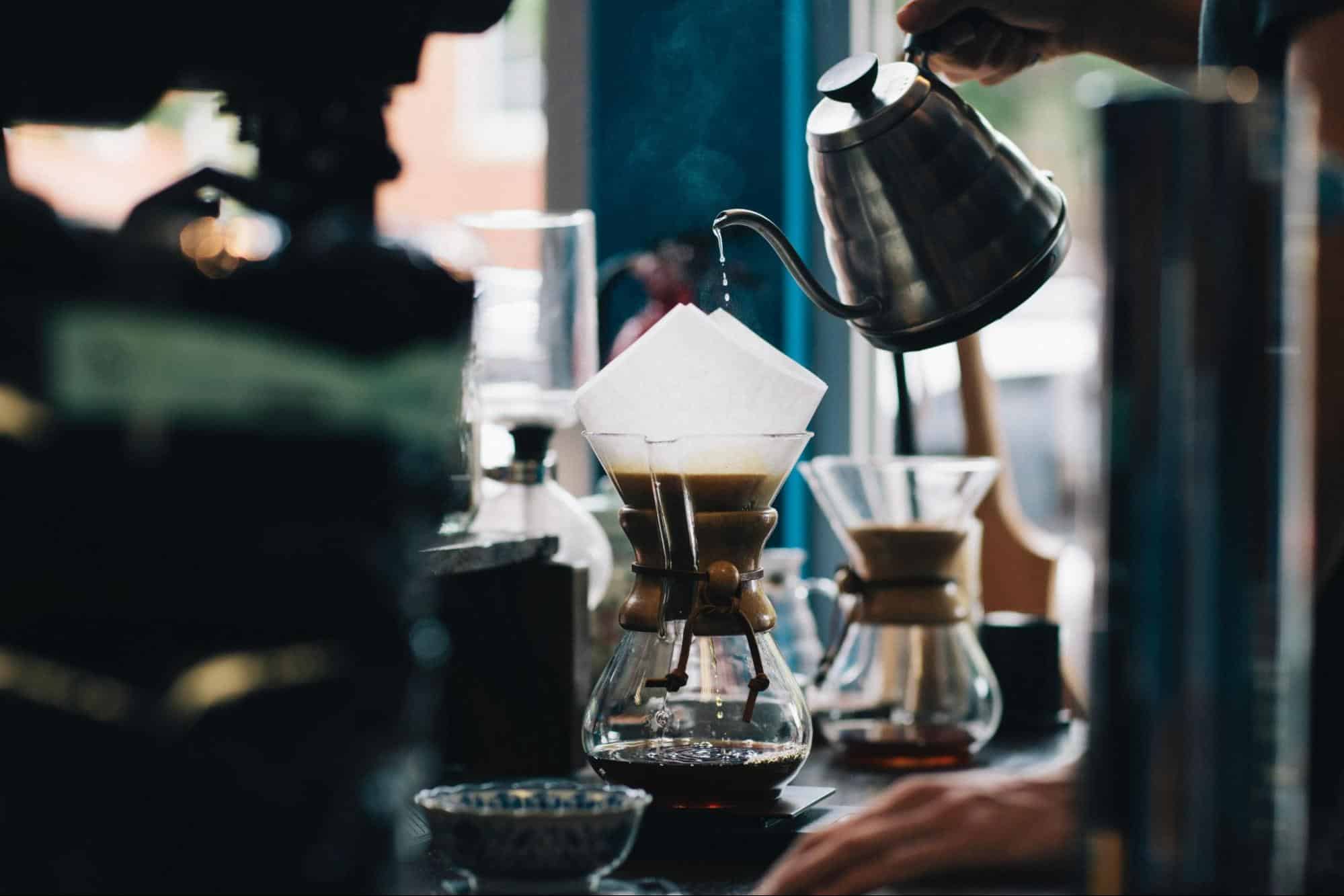
A cup of pour-over coffee has 69–92 mg of caffeine and costs $0.30–$0.50 to make.
How It Works
Pour-over coffee makers work by manually pouring hot water, 195–205 °F (90–96°C), over coffee grounds held in a filter. You’d pour this water in a slow, circular motion to ensure even saturation and extraction of the coffee’s flavors and oils.
As the water passes through the grounds, it drips into a carafe or serving container below.
The process usually takes a few minutes. Allowing you to control various brewing variables such as water temperature, pour rate, and coffee-to-water ratio.
Advantages & Disadvantages
Pros:
- Precise control over brewing variables
- Easy to clean & maintain
- Suitable for small to medium quantities of coffee
Cons:
- More time-consuming than automatic methods
- Requires practice for best results
- Manual process may not be ideal for everyone
- Additional equipment (e.g., kettle) may be needed
Popular Pour-Over Devices
Here are some popular pour-over devices to consider:
| Brand | Model | Price Range |
| Hario | V60 | $$ |
| Chemex | Classic Series | $$$ |
| Kalita | Wave | $$ |
| Melitta | Signature Series | $ |
Immersion Coffee Brewing Methods
Immersion brewing coffee-making methods involve steeping coffee grounds in water for a specific time. Allowing flavors to extract before separating the grounds from the liquid using a filter or plunger.
Let’s see what methods fall under this category.
1. French Press
A French press—a press pot or plunger pot—is a manual coffee brewing device. It consists of a cylindrical glass or stainless steel container, a plunger, and a metal or nylon mesh filter.
And it’s one of the more popular brewing methods in Australia and the United Kingdom.
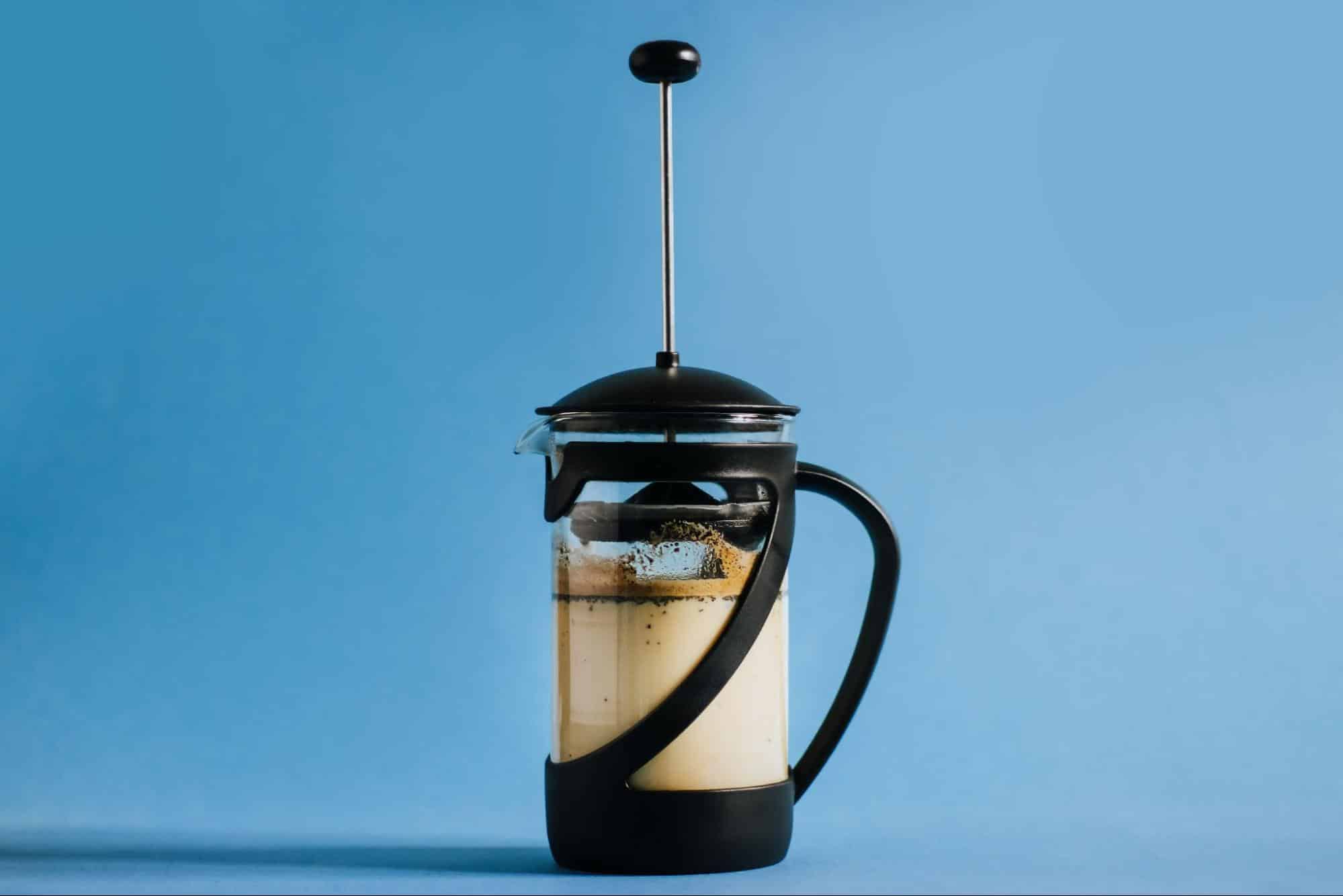
A cup of French pressed coffee has 80–120 mg of caffeine and costs $0.20–$0.40 to brew.
How It Works
To use a French press, you’d do the following:
- Place ground coffee in the container.
- Pour water that’s 195–205 °F (90–96 °C) over the grounds.
- Leave to steep for around 4 minutes, allowing the flavors and oils to extract.
- After steeping, press the plunger down.
- Doing so separates the coffee grounds from the liquid.
Advantages & Disadvantages
Pros:
- Easy to use & clean
- Rich, full-bodied coffee
- No paper filters required
- Suitable for small to medium quantities of coffee
Cons:
- Less precise control over brewing variables
- Can be difficult to achieve a consistent grind size
- Coffee grounds can end up in the brewed coffee
- Not ideal for large quantities of coffee
2. AeroPress
The AeroPress is a manual coffee brewing device. It comprises a cylindrical chamber, a plunger, and a metal or paper filter. Allowing for a unique brewing method that combines immersion and pressure-based extraction techniques.

A cup of AeroPress coffee usually has 63–84 mg of caffeine and costs $0.20–$0.40 to make.
How It Works
To use an AeroPress, place finely ground coffee in the chamber, and pour hot water, 175–185°F (80–85°C), over the grounds. You’d stir the coffee and water together and leave to steep for about 1–2 minutes.
After steeping, insert the plunger into the chamber, and apply pressure to force the liquid through the filter. Resulting in a concentrated coffee similar to espresso.
Advantages & Disadvantages
Pros:
- Quick & easy to use
- Versatile brewing options
- Compact & portable
- Easy to clean
Cons:
- Limited to small quantities of coffee
- May require extra equipment (e.g., grinder, kettle)
- Requires practice for best results
- Replacement filters may be necessary
Brewing Techniques & Variations
Standard Method: The traditional AeroPress brewing technique, where you place the chamber on top of a cup, & brew the coffee into it.
Inverted Method: Flip the AeroPress upside down, with the plunger at the bottom. Allowing for total immersion of the coffee grounds & water, and providing more control over steeping time.
Cold Brew: Using cold water & a longer steeping time (up to 12–24 hours). Use the AeroPress to create a cold brew concentrate, which you could dilute with water or milk & served over ice.
Espresso Brewing Methods
We’ll find espresso machines and methods that produce espresso-like taste throughout the following sections.

You’ll likely pay $0.50–$1.00 per espresso shot.
1. Traditional Espresso Machines
An espresso coffee maker (espresso machine) brews highly concentrated coffee. It does so by forcing hot water through finely-ground coffee beans under high pressure.
It’s one of New Zealand and Italy’s most popular coffee brewing methods. Of course, it’s from the latter, because that’s where it originated.
How It Works
Espresso machines work by heating water to 195–205 °F (90–96 °C), and then forcing it through tightly packed, finely-ground espresso beans using a pump or lever system.
This high-pressure extraction process results in a small, concentrated shot of coffee known as espresso. It serves as the base for many popular coffee drinks.
Different Espresso Preparation Methods
Here are different ways to make shots with espresso makers:
| Method | Coffee Req. | Water Req. | Brewing Time | Caffeine Content * |
| Doppio | 14–20 g | 60 ml | 40 sec | 126 mg |
| Solo | 8–12 g | 30 ml | 25–30 sec | 50–70 mg |
| Long Shot | 8–12 g | 50–70 ml | 35–60 sec | 70–100 mg |
| Ristretto | 8–12 g | 15–20 ml | 15–17 sec | 25–30 mg |
Advantages & Disadvantages
Pros:
- Produces rich, concentrated coffee
- Serves as the base for various coffee drinks
- Fast brewing process
- Some models provide precise control over brewing variables
Cons:
- Can be expensive, especially for high-quality machines
- Requires practice & skill for best results
- Regular maintenance & cleaning needed
- Additional equipment (e.g., grinder) may be necessary
Types of Machines
Manual: Also known as lever machines, the user must manually apply pressure to extract the espresso. Offering complete control over the brewing process.
Semi-Automatic: Use an electric pump to control water pressure but still require the user to grind, dose, and tamp the coffee. Offering a balance between control and convenience.
Automatic: Control water pressure and the extraction time, allowing for a more consistent espresso shot. While the user still grinds, doses, and tamps the coffee.
Super-Automatic: Automate the entire brewing process. Including grinding, dosing, tamping, and extraction. Offering the ultimate in convenience but less control over brewing variables.
2. Stovetop Espresso Makers (Moka Pot)
A stovetop coffee maker is a manual coffee brewing device. It uses steam pressure to force hot water through coffee grounds. Resulting in a strong, concentrated coffee similar to espresso.
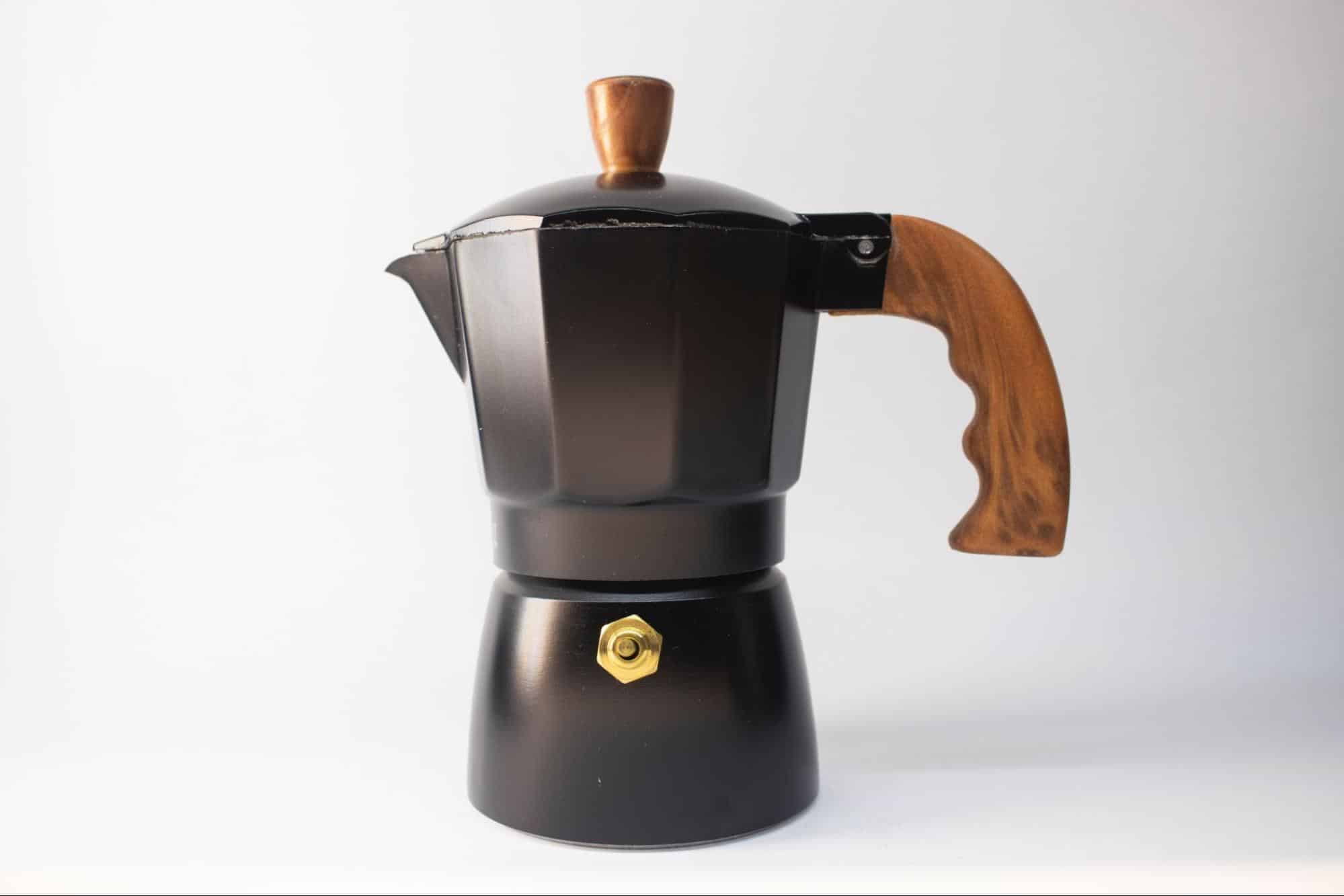
A cup of Moka-made coffee usually has 219–292 mg of caffeine and costs $0.10–$0.20 to make.
How It Works
Stovetop coffee makers consist of three main parts:
- Lower chamber: For water.
- You’d fill this part with water and place it on a heat source.
- Middle chamber: For coffee grounds.
- Upper chamber: For the brewed coffee.
As the water heats, steam pressure forces it through the coffee grounds in the middle chamber. And up into the upper chamber, where the brewed coffee collects.
Advantages & Disadvantages
Pros:
- Affordable & durable
- Easy to use
- Compact design
- Produces strong, concentrated coffee
Cons:
- Limited control over brewing variables
- Requires a heat source (e.g., stovetop)
- Not suitable for large quantities of coffee
- Can result in bitter or burnt-tasting coffee if not used correctly
Cold Brew & Iced Coffee Brewing Methods
Cold Brew & Iced Coffee Brewing Methods are ways of making coffee with cold or room temperature water. By steeping the grounds for several hours (immersion) or by dripping water over them slowly (drip).
You won’t find too much variety in this area. But hey, you’ll find something.
1. Cold Brew
A cold brew coffee maker brews coffee using cold water and an extended steeping time. Resulting in a smooth, less acidic coffee concentrate you could dilute with water, milk, or ice.
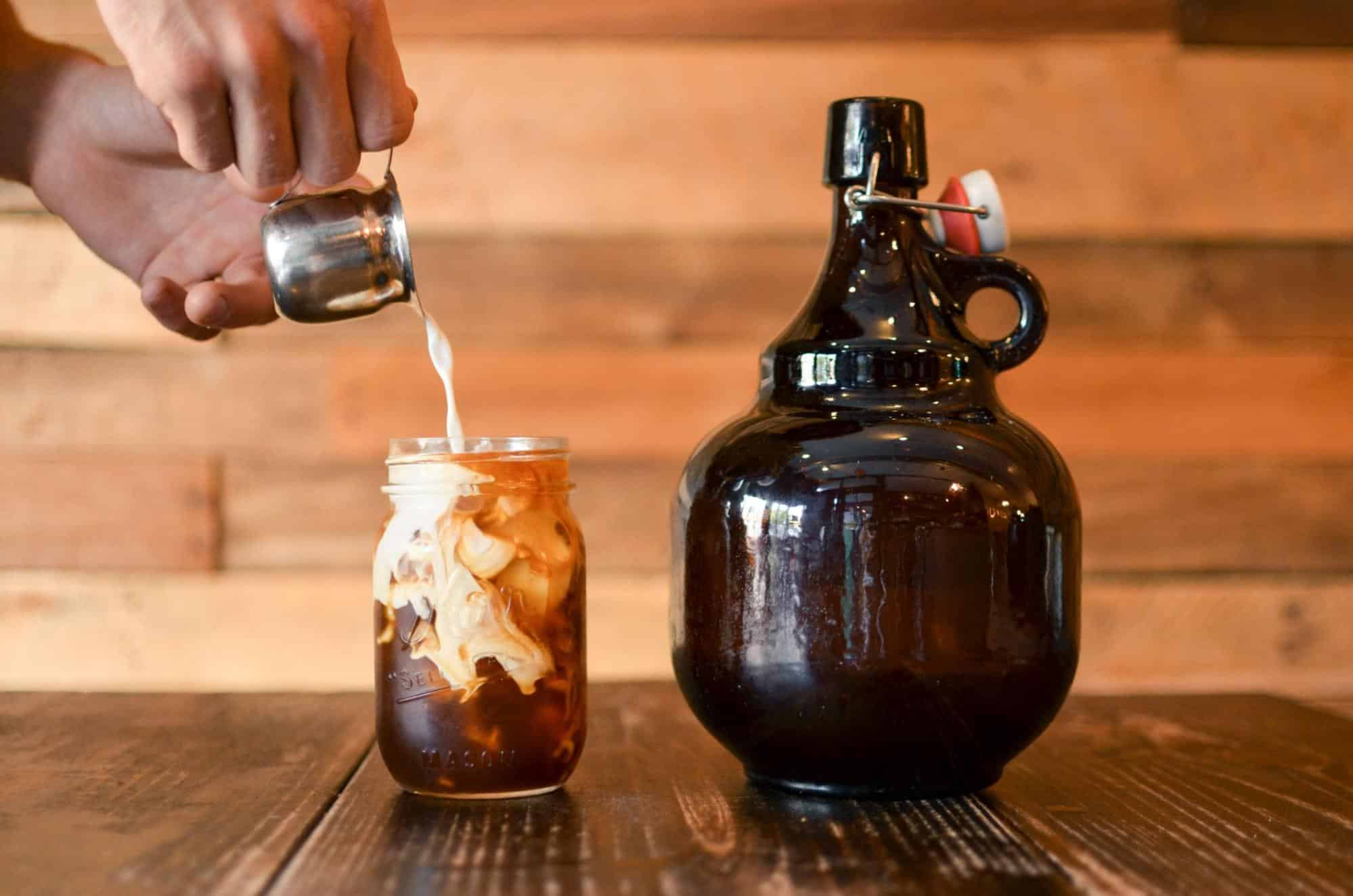
A cup of cold brew coffee usually has 100–200 mg of caffeine and costs $0.40–$0.60 to make.
How It Works
Cold brew coffee makers use the immersion or slow drip method.
In the immersion method, you’d combine coarsely ground coffee with cold water and leave it to steep for an extended period. Usually 12–24 hours. The coffee grounds are then filtered out, leaving a concentrated coffee liquid.
In the slow drip method, cold water drips through coffee grounds and filters into a container. Taking anywhere from 3–24 hours, depending on the device and desired strength.
Advantages & Disadvantages
Pros:
- Smooth, less acidic taste
- Can prepared it in large batches
- Concentrate can stor it for up to two weeks
- No need for a heat source
Cons:
- Lengthy brewing process
- Requires more coffee grounds than hot brewing methods
- Additional equipment needed for filtration
- Limited control over brewing variables
Immersion vs. Slow Drip Methods
Immersion Method:
- Involves steeping coffee grounds in cold water for an extended period (12–24 hours)
- Produces a full-bodied, strong coffee concentrate
- More common & easier to use at home
Slow Drip Method:
- Cold water drips slowly through coffee grounds over an extended period (3–24 hours)
- Produces a lighter, more nuanced flavor profile
- Often requires specialized equipment & more precise control over drip rate
2. Iced Coffee
Iced coffee is a coffee beverage made by cooling down brewed coffee and serving it over ice. Often with added milk, cream, or sweeteners.
How It Works
To make iced coffee, brew hot coffee using a preferred brewing method. Such as drip, espresso, or French press.
Once brewed, let it cool by refrigerating or sitting at room temperature.
When the coffee has cooled, pour it over ice and mix it with milk, cream, or sweeteners, depending on personal preference.
Advantages & Disadvantages
Pros:
- Refreshing & cooling on hot days
- Make(able) with any preferred brewing method
- Customizable to individual taste preferences
- Easy to prepare at home or in a coffee shop
Cons:
- Can become diluted if not brewed strong enough or if too much ice melts
- Requires additional cooling time compared to cold brew
- Not as smooth or low in acidity as cold brew
- Flavor may vary depending on the brewing method used
3. Japanese Iced Coffee Method
The Japanese iced coffee method is a technique that involves brewing hot coffee directly over ice. Rapidly cooling the coffee and locking in its fresh, bright flavors.
To use this method, place ice into a carafe or serving vessel. Next, adjust your coffee-to-water ratio to account for the ice. Using slightly less water for the hot brewing process.
Brew your coffee using a pour-over method, such as a Hario V60 or Chemex, pouring the hot coffee onto the ice in the carafe.
The hot coffee melts the ice, chilling it while preserving its original flavors and aromas. Once the brewing process is complete, stir the coffee to ensure even dilution.
A cup of Japanese iced coffee usually has 69–92 mg of caffeine and costs $0.30–$0.50 to make.
Percolation & Vacuum Coffee Brewing Methods
Percolation & Vacuum Coffee Brewing Methods are ways of making coffee with hot water. By forcing it through a bed of coffee grounds (percolation) or creating a vacuum that draws it through a filter (vacuum).
1. Percolator Coffee Maker
A percolator coffee maker is a type of brewing device that cycles boiling water through coffee grounds to extract flavor.
A cup of coffee from a percolator has 64–272 mg of caffeine and costs $0.10–$0.20 to make.
How It Works
Percolator coffee makers consist of a lower chamber for water, an upper chamber for coffee grounds, and a vertical tube connecting the two.
As the water in the lower chamber heats, it rises through the tube, spills over the coffee grounds, and drips back into the lower chamber. This process repeats many times.
Advantages & Disadvantages
Pros:
- Simple to use
- Durable & long-lasting
- Can brew large quantities of coffee
- Produces strong, robust coffee
Cons:
- Limited control over brewing variables
- Can result in over-extraction & bitterness
- Requires close monitoring to prevent overheating
- Not ideal for lighter or more nuanced coffee flavors
Electric vs. Stovetop Percolators
Electric Percolators:
- Automatically regulate temperature & brewing time
- Portable & self-contained, no need for a separate heat source
- Often include a warming function to keep coffee hot
Stovetop Percolators:
- Require a separate heat source, such as a stovetop or campfire
- More control over brewing process & temperature (with careful monitoring)
- Typically more affordable & compact than electric models
2. Vacuum/Siphon Coffee Maker
A siphon coffee maker—also known as a vacuum pot or siphon—is a brewing device that uses a combination of vapor pressure and vacuum to brew coffee.
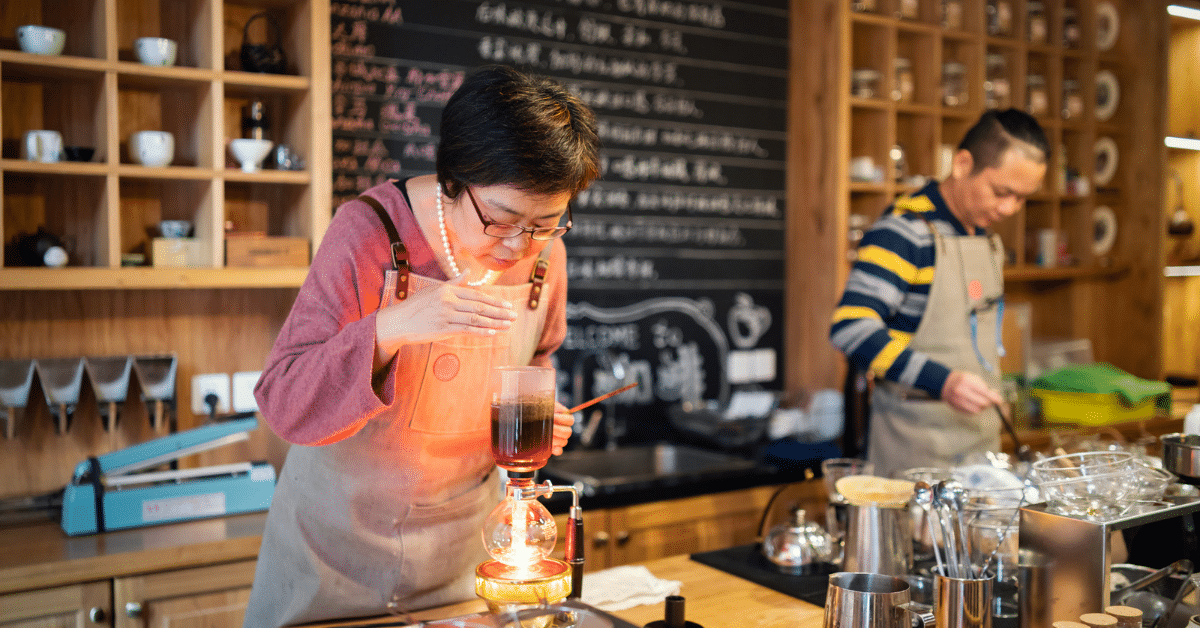
A cup of siphon-made coffee usually has 95 mg of caffeine and costs $0.40–$0.60 to make.
How It Works
A siphon coffee maker consists of two chambers:
- A bottom chamber for water.
- An upper chamber for coffee grounds, connected by a siphon tube.
As the water in the lower chamber heats, vapor pressure forces it into the upper chamber. Where it mixes with the coffee grounds.
Once you remove the heat source, the vacuum created in the lower chamber pulls the brewed coffee through a filter. And back into the bottom chamber, leaving the grounds behind.
Advantages & Disadvantages
Pros:
- Produces a clean, crisp, & aromatic coffee
- Visually engaging brewing process
- Allows for precise control over brewing variables
Cons:
- More expensive & fragile than other brewing methods
- Requires a heat source, such as a butane burner or alcohol lamp
- More complex & time-consuming process
- Needs careful handling & maintenance
Turkish & Middle Eastern Coffee Brewing Methods
The following sections will cover unique coffee-making methods in Turkey and the Middle East.
1. Turkish Coffee
A Turkish coffee maker, a cezve or ibrik, is a small, long-handled pot. Many use it to brew a strong, unfiltered coffee called Turkish coffee.
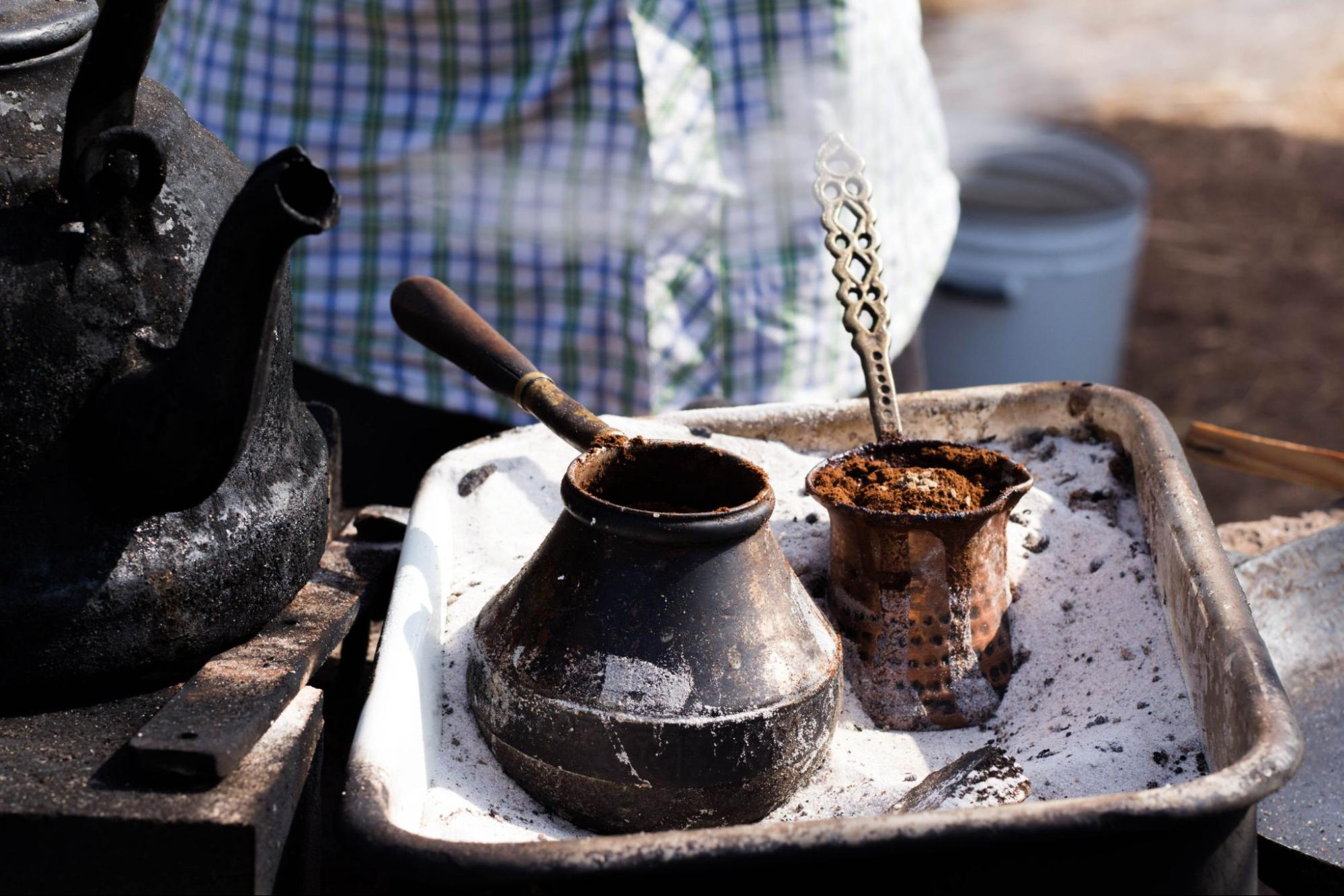
A 2.0 oz (75.6 gram) cup of Turkish coffee has, on average, 50 mg of caffeine and costs $0.10–$0.20 to make.
How It Works
To make Turkish coffee, combine finely ground coffee, water, and sugar (if desired) in the cezve. Place the cezve over low heat, occasionally stirring until the sugar dissolves.
A frothy foam will form on the surface as the mixture heats up.
Before it reaches boiling point, remove the cezve from heat and pour a small amount of the frothy coffee into each serving cup.
Return the cezve to the heat, allowing the foam to rise again. Then pour the remaining coffee into the cups, ensuring an even foam distribution.
Advantages & Disadvantages
Pros:
- Rich, bold, & flavorful coffee
- Unique, traditional brewing method
- Small, portable brewing equipment
- No need for filters or additional devices
Cons:
- Requires a very fine grind & specific brewing technique
- Not suitable for large quantities of coffee
- Coffee grounds settle at the bottom of the cup
- May be too strong or bitter for some preferences
Traditional Tools
- Cezve/Ibrik: A small, long-handled pot made of copper, brass, or ceramic.
- Turkish coffee cups (fincan): Small, often ornate cups designed for serving Turkish coffee.
- Heating source: Traditionally, you’d brew Arabic coffee over hot sand or embers.
- Modern methods include stovetop or electric burners.
2. Arabic Coffee (Qahwa)
An Arabic Coffee (Qahwa) coffee maker, known as a dallah, is a traditional pot made of brass or copper [1]. Folks use it to brew a light, fragrant coffee commonly served in the Arab world.
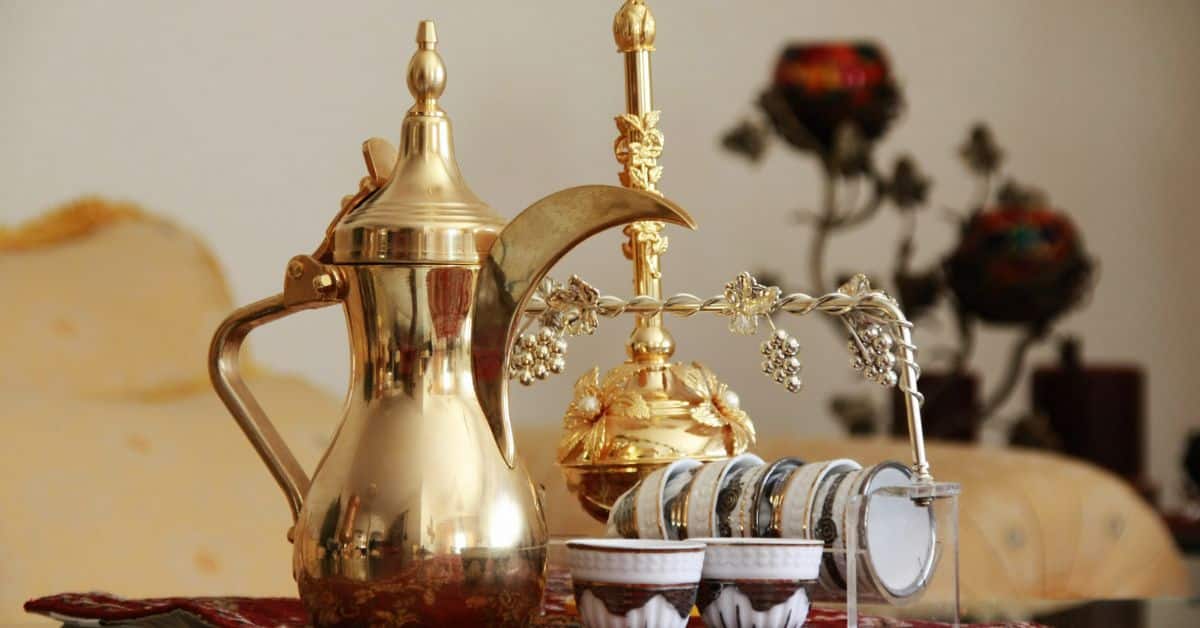
A cup of Arabic Coffee has 4 mg of caffeine and costs$0.10–$0.20 to make.
How It Works
Combine lightly roasted, coarsely ground coffee with water, cardamom, and other spices (such as saffron or cloves) in the dallah. Place the dallah over low heat and allow the mixture to simmer gently for 10–15 minutes.
Once the brewing is complete, remove the dallah from the heat and let the coffee grounds settle for a minute or two. Pour the brewed coffee into small, handleless cups called finjan. Ensure no coffee grounds end up in the cups.
Advantages & Disadvantages
Pros:
- Unique, aromatic, & spiced flavor profile
- Traditional & culturally significant brewing method
- No need for filters or additional devices
Cons:
- Requires specific brewing technique & equipment
- Not suitable for large quantities of coffee
- May be too light or spiced for some preferences
- Coffee grounds settle at the bottom of the dallah
Traditional Tools
- Dallah: A traditional, often ornate pot made of brass or copper, used for brewing Arabic coffee.
- Finjan: Small, handleless cups designed specifically for serving Arabic coffee.
- Heating source: Traditionally, you’d brew Arabic coffee over hot sand or embers.
- But modern methods include stovetop or electric burners.
More Brewing Methods
Check out all the methods we didn’t cover earlier.
1. Coffee Bag
Coffee bag brewing is a method of making coffee using pre-portioned, single-serve bags of coffee grounds.
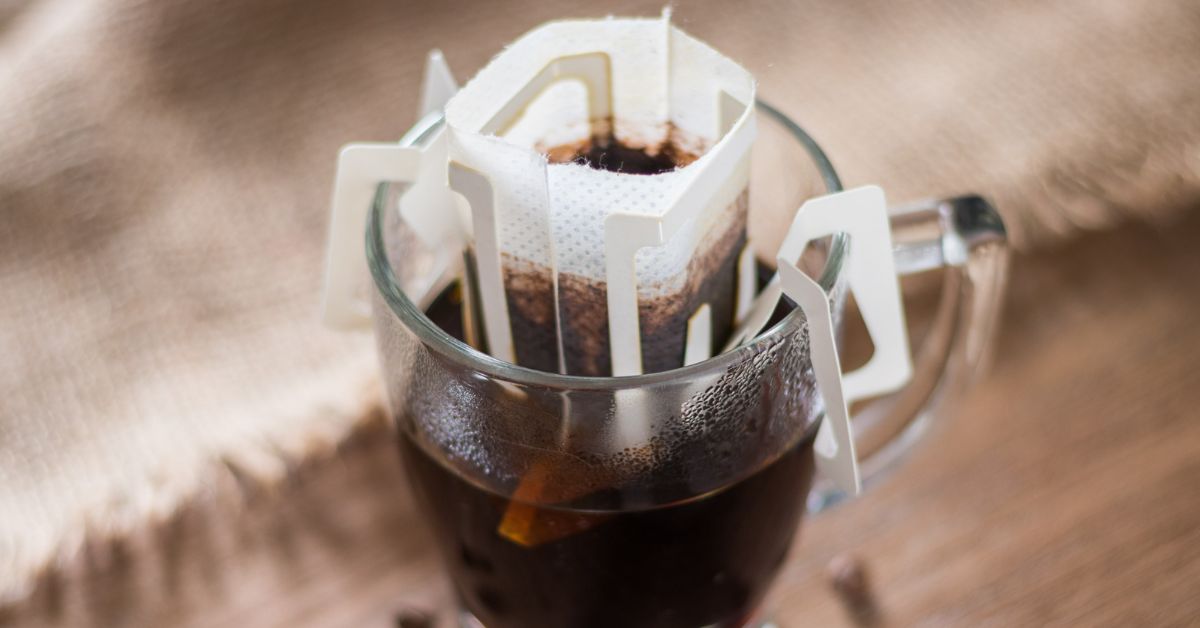
Each coffee bag has 85–95 mg of caffeine and costs $0.30–$0.50.
How It Works
To brew coffee using a coffee bag, place the coffee bag in a cup and pour hot water over it. Allow the coffee to steep for the recommended time (3–5 minutes) before removing the bag.
Adjust the brewing time to taste for a stronger or milder coffee.
Advantages & Disadvantages
Pros:
- Convenient & easy to use
- Portable, great for travel or on-the-go brewing
- No need for specialized equipment
- Easy clean-up
Cons:
- Limited control over brewing variables
- Not as fresh as freshly ground coffee
- Can produce a weaker coffee compared to other brewing methods
- May generate more waste due to single-use packaging
Brands & Varieties
Here are different types of coffee bags to consider:
| Brand | Coffee Variety | Roast Level |
| Taylors of Harrogate | Lazy Sunday | Medium |
| Grady’s Cold Brew | New Orleans Style | Dark |
| Steeped Coffee | Sunrise Blend | Light |
| Joe’s Coffee | Daily Dose Blend | Medium |
2. Clever Dripper
A Clever Dripper is a manual pour-over coffee maker. It combines the immersion brewing method of a French press with the paper-filtered clarity of a pour-over.
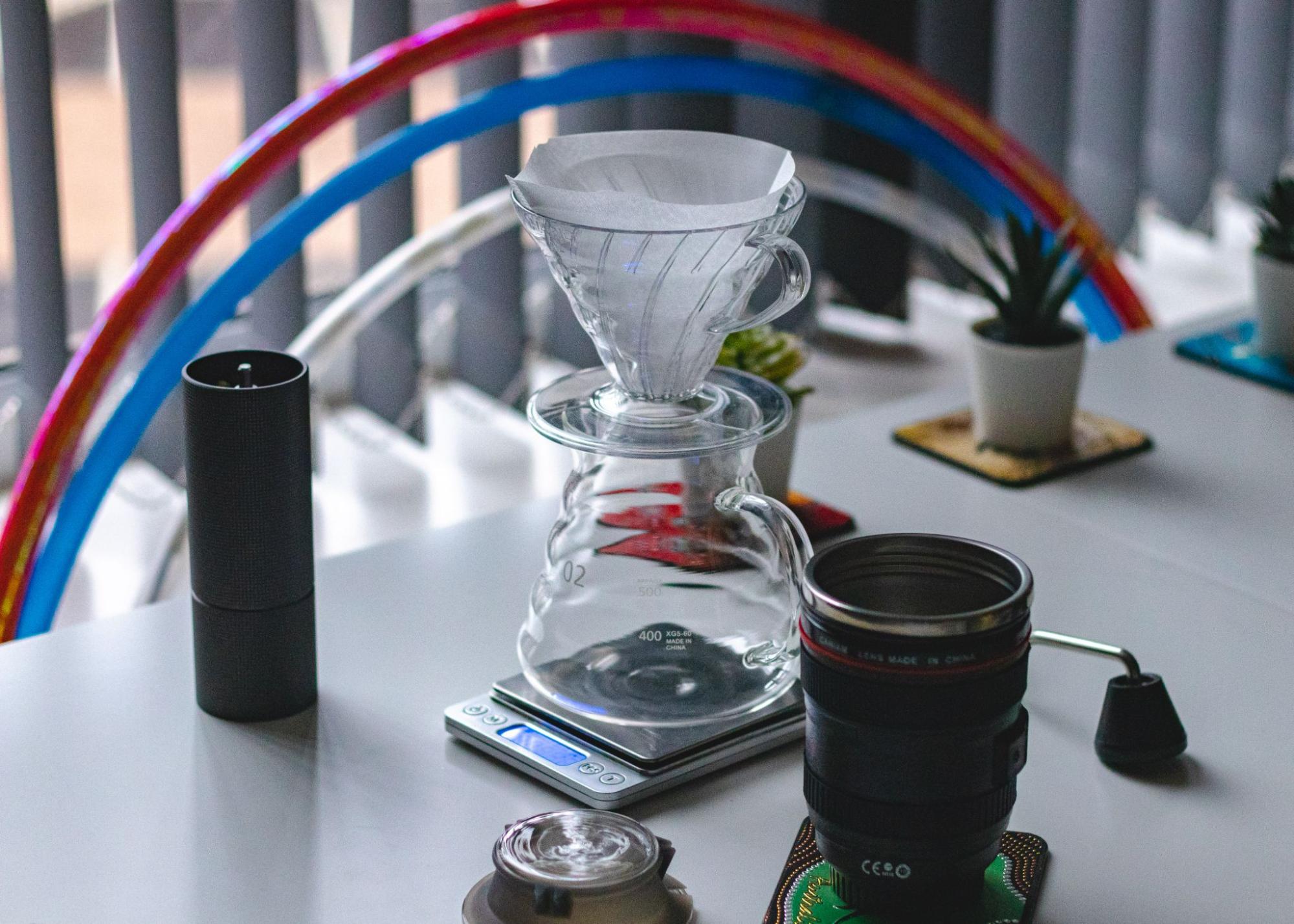
A cup of clever dripper-made coffee usually has 69–92 mg of caffeine and costs $0.20–$0.40.
How It Works
To brew coffee using a Clever Dripper:
- Place a paper filter in the dripper and rinse it with hot water to remove any paper taste.
- Add the desired amount of medium-coarse ground coffee to the filter.
- Pour hot water over the coffee grounds, ensuring even saturation.
- Allow the coffee to steep for about 3–4 minutes.
- After soaking, place the Clever Dripper on top of a cup or carafe.
This will release the valve at the bottom, allowing the brewed coffee to flow through the filter and into the cup.
Advantages & Disadvantages
Pros:
- Combines immersion & pour-over brewing techniques
- Easy to use & clean
- No need for specialized equipment
Cons:
- Requires manual operation & attention to brewing time
- Not suitable for large quantities of coffee
- Limited control over brewing variables
3. Vietnamese Coffee Maker (Phin)
A Vietnamese coffee maker (phin) is a metal, single-cup brewing device used to make traditional Vietnamese coffee.

A cup of Vietnamese coffee usually has 100 mg of caffeine and costs $0.10–$0.20 to make.
How It Works
To make coffee with a phin, add medium to coarse ground coffee into the phin’s filter chamber. Place the filter press on top of the grounds, applying light pressure to compress them.
Set the phin on top of a cup or glass, then pour some hot water into the filter chamber to pre-wet the grounds. After about 20 seconds, fill the chamber with more hot water. The brewed coffee will drip through the small holes in the filter chamber and into the cup.
Add sweetened condensed milk to the cup for traditional Vietnamese coffee before brewing.
Advantages & Disadvantages
Pros:
- Simple & portable brewing method
- No need for paper filters or additional equipment: if you opt for a
- Produces a strong, bold coffee
Cons:
- Limited to making one cup at a time
- Brewing process can be slow
- Requires practice to achieve the desired brew strength
Traditional Tools
- Phin: A small, metal, single-cup brewing device, consisting of a filter chamber, a filter press, & a lid.
- Coffee grounds: Typically made with Robusta beans.
- Sweetened condensed milk: Often added to the bottom of the cup before brewing.
- Glass or cup: Use a clear glass to showcase the beautiful layers of the coffee & condensed milk.
- Spoon: Use a small spoon to mix the coffee & condensed milk.
4. Walküre
A Walküre coffee maker is a German-designed ceramic pour-over coffee maker. It features a unique double filtration system consisting of horizontal and vertical grooves. Eliminating the need for paper filters.
A cup of Walküre coffee usually has 95 mg of caffeine and costs $0.40–$0.60 to make.
How It Works
Here’s how you’d brew with a Walküre:
- Place medium-fine ground coffee into the filter cone.
- Pour hot water over the coffee grounds in a circular motion.
- Allow the water to flow through the grounds and the grooves in the cone.
- The brewed coffee then drips into the carafe or cup below.
The double filtration system ensures a clean, sediment-free coffee.
Advantages & Disadvantages
Pros:
- No need for paper filters, reducing waste & cost
- Ceramic construction retains heat well
- Unique double filtration system produces a clean, sediment-free cup
- Elegant design
Cons:
- More fragile compared to metal or plastic coffee makers
- May be more expensive than other pour-over options
- Brewing process requires attention & manual operation
5. Nel Drip
A nel drip coffee maker—a woodneck or flannel drip brewer—is a traditional Japanese pour-over coffee maker. It uses a reusable cloth filter instead of paper filters. And consists of a glass carafe and a wood or metal hoop with a cloth filter attached.
A cup of nel drip coffee usually has 69–92 mg of caffeine and costs $0.30–$0.50 to make.
How It Works
Here’s how it works:
- Wet the cloth filter with hot water to remove any lint and preheat the glass carafe.
- Add medium-coarse ground coffee to the cloth filter.
- Pour a small amount of hot water over the grounds.
- Allow them to bloom for about 30 seconds.
- Slowly pour the remaining hot water over the grounds in a circular motion.
- The brewed coffee will pass through the cloth filter and drip into the carafe below.
Advantages & Disadvantages
Pros:
- Reusable cloth filter is eco-friendly & cost-effective
- Produces a clean, smooth, & full-bodied cup of coffee
- Aesthetic & traditional design
Cons:
- Requires regular maintenance & cleaning of the cloth filter
- Brewing process demands attention & manual operation
- Not as common as other pour-over brewers
- Can get moldy
This is one of the more affordable ways to make coffee. However, I had one of these and the wooden handle got moldy after sitting for a long time. If you get one of these, ensure you dry the handle immediately when cleaning.
6. Pod Machines
A pod coffee maker is a single-serve coffee machine that uses pre-packaged coffee pods (capsules) to brew individual cups of coffee.
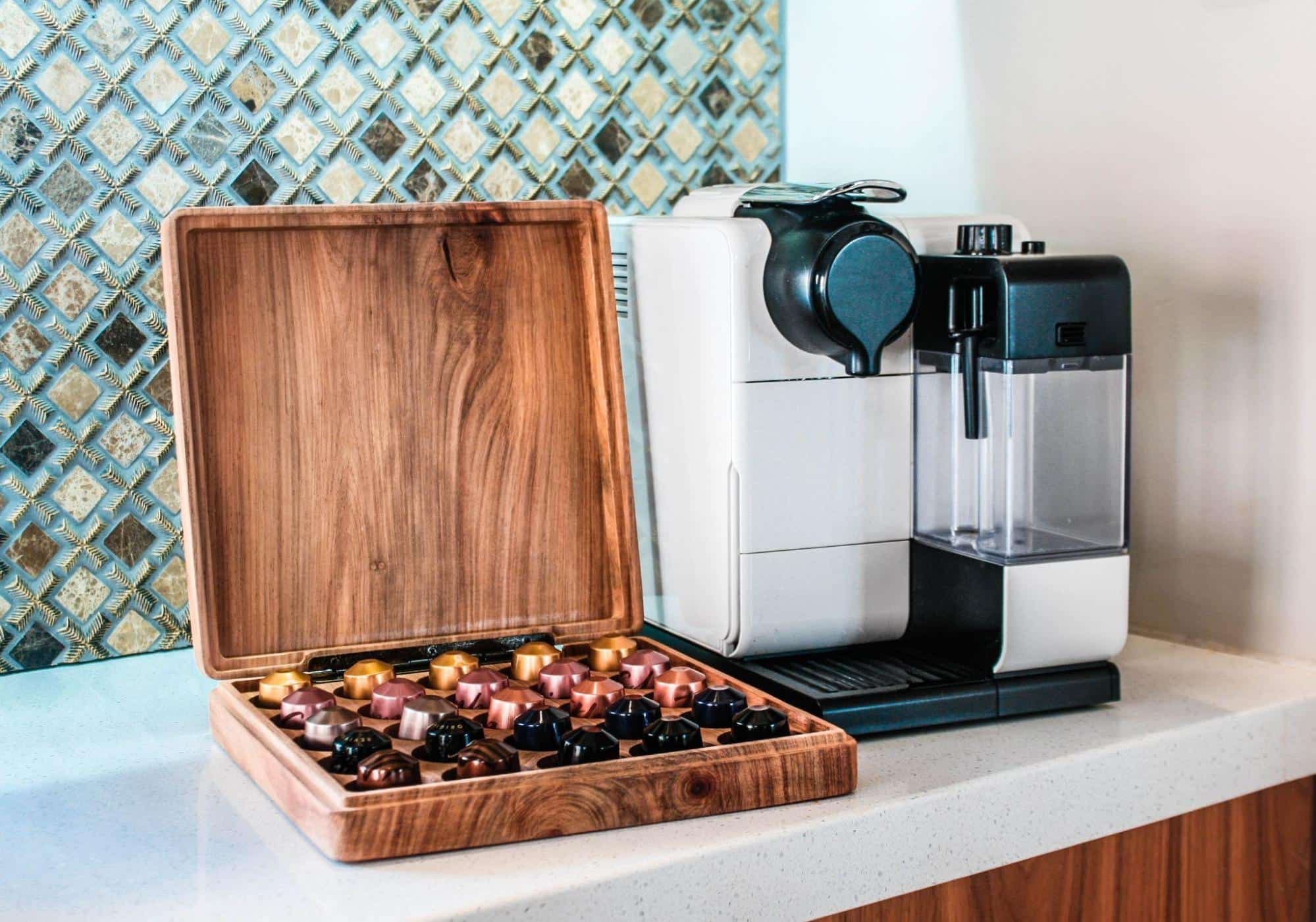
Let’s discuss the average caffeine content in the most popular capsules. K-Cup pods have between 75 and 150 mg of caffeine per 8.0 oz cup. Nespresso pods have 50–100 mg of caffeine per cup.
Each pod costs $0.50–$1.00. These numbers will vary by brand and flavor.
How It Works
Insert the coffee pod into the machine’s designated slot, close the lid, and press the start button.
The machine will puncture the pod. Forcing hot water through the grounds and dispensing the brewed coffee into a cup placed below.
Once the process finishes, the machine ejects the pod. Or you’d manually remove it.
Advantages & Disadvantages
Pros:
- Quick & convenient brewing process
- Consistent results with minimal effort
- Minimal cleanup required
- Wide variety of coffee & beverage options available in pods
Cons:
- Single-use pods generate plastic waste
- Limited customization options
- Pods can cost more than buying coffee beans
- Coffee quality may not be as high as other brewing methods
Popular Brands & Models
Let’s check out popular capsule coffee makers:
| Sboly Single Serve Coffee Maker | Nespresso Lattissima Touch | Keurig K-Cafe Special Edition | Gaggia Classic Pro |
| De’Longhi Dedica | Keurig K-Mini Plus | Nespresso Essenza Mini | Cuisinart Premium Single Serve Brewer |
| Keurig K-Classic K50 | Nespresso VertuoPlus | BLACK+DECKER Single Serve Coffee Maker | Nespresso Pixie |
| Keurig K-Elite | Breville Nespresso Creatista | Hamilton Beach FlexBrew Single Serve |
7. Instant Coffee
Instant coffee is a type of coffee processed into a soluble powder or granules. Allowing anyone to prepare it by dissolving in hot water.

Instant coffee packets usually have 30–90 mg of caffeine and cost $0.05–$0.10. Amounts will vary by brand.
How It Works
Manufacturers make instant coffee by brewing coffee, then extracting the liquid and dehydrating. They do this through freeze-drying or spray-drying methods.
This results in a soluble coffee powder or granules you could dissolve with hot water to create a cup of coffee.
Advantages & Disadvantages
Pros:
- Quick & easy to prepare
- Unopened instant coffee could last 2–20 years [2]
- No specialized equipment needed
- Convenient for travel & on-the-go
Cons:
- Lower quality & flavor compared to brewed coffee
- Limited customization options
- May contain additives or preservatives
- Lower caffeine content compared to brewed coffee
A typical 8-ounce cup of regular instant coffee contains about 62 mg of caffeine [3]. A similar cup of brewed coffee contains between 96 mg to 200 mg of caffeine.
Brands & Varieties
Here are various instant coffee brands and varieties you may find:
| Brand | Variety |
| Mount Hagen | Organic Freeze Dried Instant Coffee |
| Four Sigmatic | Instant Mushroom Coffee with Lion’s Mane |
| Joe Coffee | The Daily Specialty Instant Coffee |
| Maxwell House | Original Roast Instant Coffee |
| Cusa Tea & Coffee | Cold Brew Vanilla Dark Roast |
| Cometeer | Medium/Dark Box |
| Canyon Coffee | Instant Coffee |
| Waka Coffee | Quality Instant Coffee |
| Starbucks VIA | Instant French Roast Dark Roast Coffee |
| Nescafé Taster’s Choice | Hazelnut Instant Coffee |
| Nescafé Taster’s Choice | French Roast |
| Maxim Mocha Gold | Coffee Mix |
Brewing Tips for Optimal Flavor Extraction
Follow these tips to make your drinks taste better:
- Use freshly roasted and ground coffee for the best flavor.
- Rinse the cloth filter with hot water before brewing to remove lint & preheat the carafe.
- Use a gooseneck kettle for better control over water flow during pouring.
- Allow the coffee grounds to bloom for about 30 seconds before pouring the rest of the water.
- Experiment with the coffee-to-water ratio, grind size, & pouring technique.
- Clean & dry the cloth filter after each use to prevent the buildup of oils & residue.
Choosing the Right Brewing Method: Factors to Consider
The following sections will cover what factors to consider to brew the best cup of coffee possible.
1. Flavor Preferences
Different brewing techniques produce varied tastes in your coffee.
Here’s a brief guide to help you choose:
- Espresso: Bold, rich, & intense flavor
- Drip or pour-over: Brighter, cleaner taste with delicate nuances
- French press: Fuller-bodied, robust & earthy notes
- Cold brew: Smooth, less acidic, & sweet flavor
Coffee beans, grind size, and water quality also impact the flavor. Experiment with different methods and variables. Doing so will help you discover which combination best suits your palate.
2. Time & Convenience
Consider the following options for convenience:
- Instant coffee: Quickest & easiest, sacrificing flavor
- Pod coffee makers: Fast & consistent, but limited customization
- Drip coffee makers: Set & forget, ideal for large batches
- Espresso machines: Need some skill, but quick once mastered
- French press & pour-over: Hands-on but fast(ish)
Choose a method that suits your schedule and willingness to invest time in the process.
3. Equipment & Cost
Here’s an overview of some options:
- Instant coffee: Minimal equipment, low cost
- French press: Inexpensive, compact, & versatile
- Drip coffee makers: Affordable, various sizes, & prices
- Pour-over: Simple, low-cost, but requires manual effort
- Espresso machines: Expensive, space-consuming, but high-quality results
Weigh your priorities and consider what you’re willing to invest.
4. Experimenting with Different Methods
Trying out different methods helps you identify your personal preferences.
Here’s some tips for your exploration:
- Start with basic methods: French press, drip, & pour-over
- Try more advanced techniques: AeroPress, siphon, or espresso
- Get creative: tweak variables like grind size, water temperature, & brew time
- Take notes: track your progress & preferences
On to the final factor.
5. Combining Brewing Methods for Unique Coffee Experiences
Combining brewing methods allows you to craft unique coffee experiences.
Here’s how you could get started:
- Mix methods: AeroPress topped with French press milk froth
- Blend strengths: A shot of espresso mixed with pour-over
- Layer techniques: Cold brew concentrate with hot water from a siphon brewer
That’s all.
FAQs
Read on to check out frequently asked questions about coffee making methods.
How Does Pressure Affect the Taste of Coffee?
Pressure affects coffee taste by extracting more oils and soluble compounds. Resulting in a richer, bolder flavor profile.
What Is the Difference Between Immersion & Filtration Methods?
Immersion methods steep coffee grounds in water. Filtration methods pass water through the grounds to extract flavors.
How Do I Choose the Right Grind Size for My Brewing Method?
Match the grind size to your brewing method. Coarse for French press, medium for drip, and fine for espresso.
How Do I Clean & Maintain My Coffee Brewing Equipment?
Follow the manufacturer’s guidelines for cleaning and maintenance. This typically involves regular cleaning with mild detergent, descaling, and replacing worn parts.
How Do I Measure the Ratio of Coffee to Water for My Brewing Method?
Use a digital scale to measure the coffee and water.
What Are Some Common Mistakes to Avoid When Brewing Coffee?
Over-extraction, using incorrect water temperature, and an improper coffee-to-water ratio are common mistakes.
Conclusion
If you have the money, experiment with different coffee brewing methods until finding one that meets your ideal taste.
To save time, go for a pod maker or instant coffee. And if you’re looking for something to take camping, consider a phin, instant coffee, stovetop coffee, or Aeropress.
Since I covered all these different methods, you’ll want to know about the coffee makers used to brew these drinks.
Check out our guide on what coffee makers are and how different ones work.

